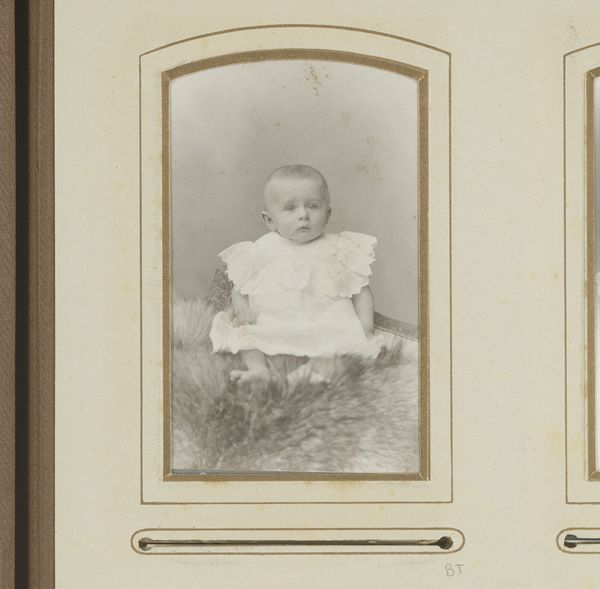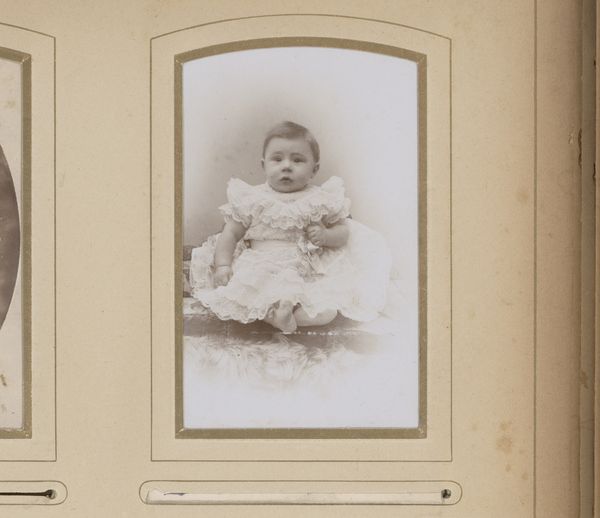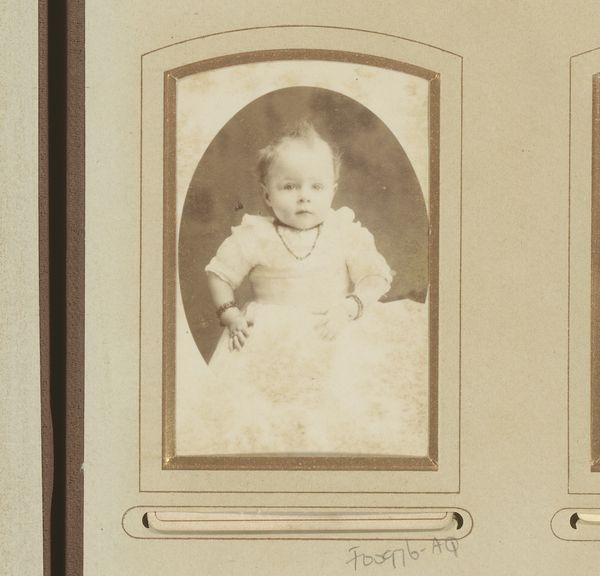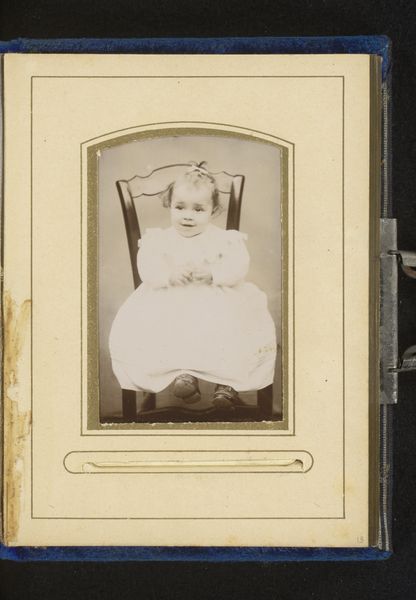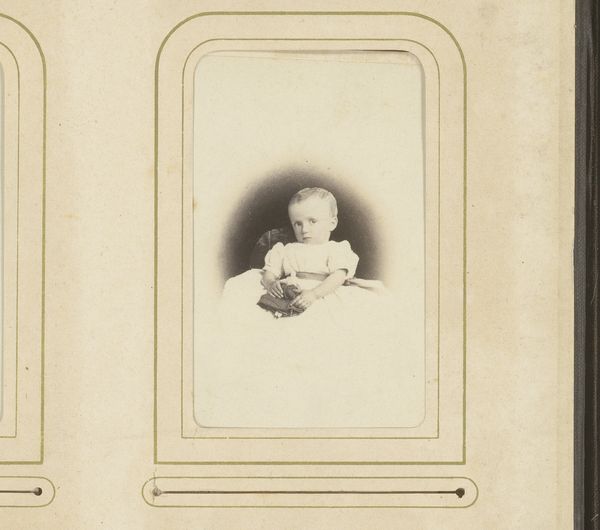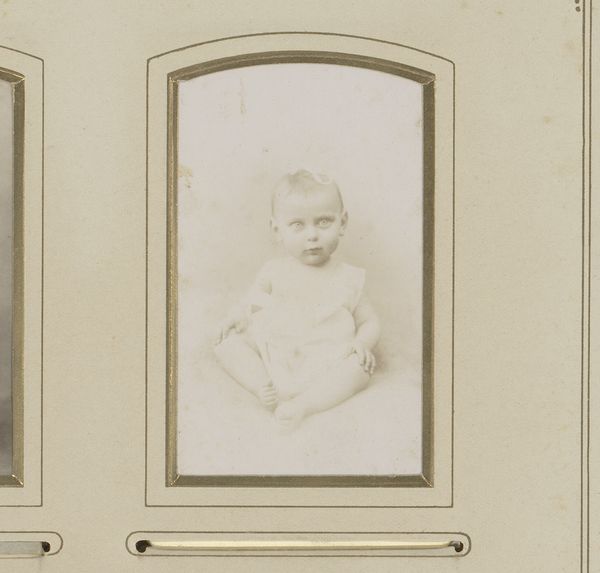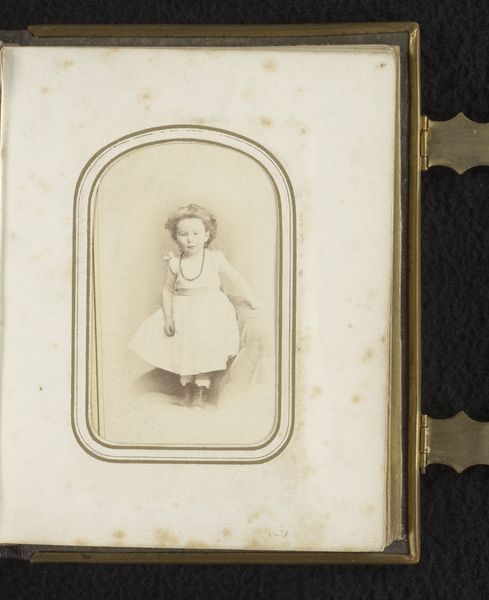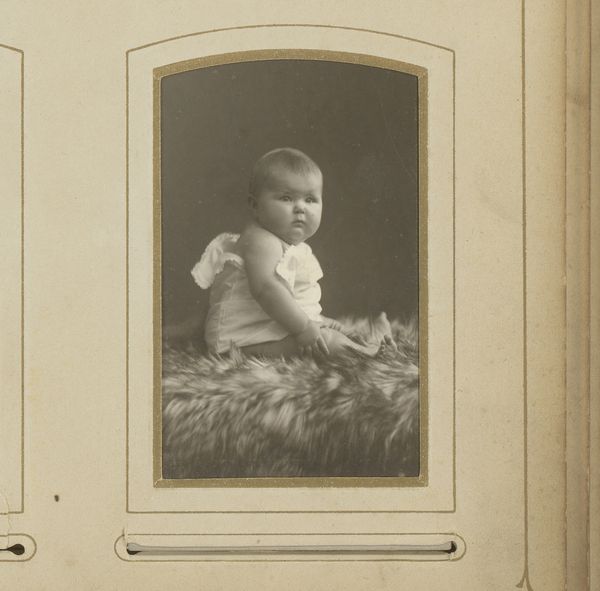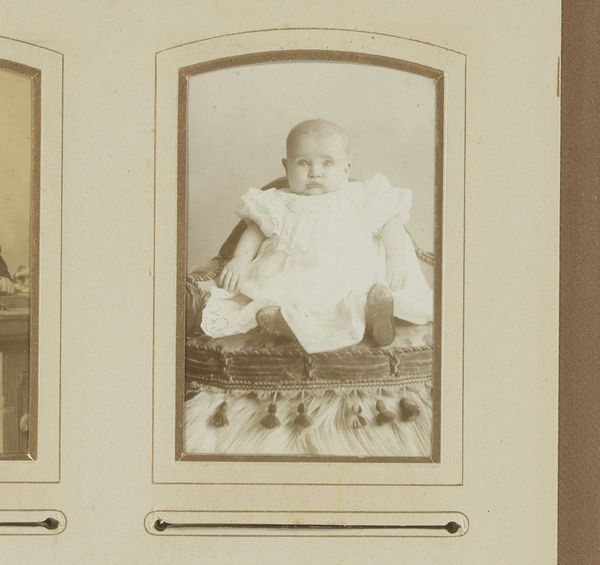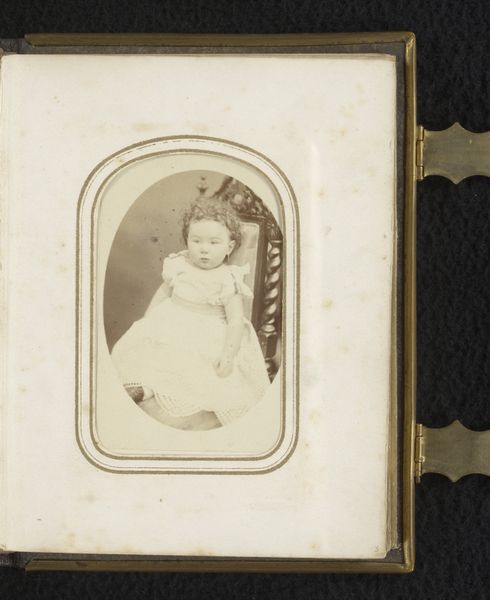
photography, albumen-print
#
portrait
#
photography
#
albumen-print
#
realism
Dimensions: height 84 mm, width 51 mm
Copyright: Rijks Museum: Open Domain
Curator: This is "Portret van een zittende baby, aangeduid als Wim," or "Portrait of a sitting baby, referred to as Wim," an albumen print from 1881 by Hermanus Jodocus Weesing. Editor: It’s remarkably still. Almost haunting, with the blurred edges and the serious expression of the child. I’m drawn to the tactile quality; it feels weighty somehow, not just an ephemeral image. Curator: That sense of weight undoubtedly comes from the albumen printing process. Think of the layers involved: coating the paper with egg whites, sensitizing it, exposing it to sunlight… It's labor intensive and creates a uniquely luminous surface. Albumen prints were incredibly popular at the time because they allowed for mass production and clear photographic detail, offering a relatively accessible way to record likeness. Editor: Right, it's interesting how technological advancements also influence subject matter. Suddenly portraiture wasn’t just for the wealthy; photography democratized image-making, extending it to a wider population and allowing for these personal records. Curator: Precisely. Before this, a painted portrait was a status symbol, a sign of wealth and importance. Photography disrupted that entirely, transforming family history and representation. Who 'Wim' was precisely is unfortunately unknown, but this intimate portrait immortalizes him as part of his family's narrative. Editor: And there's an inherent power dynamic at play too. Look at the way the baby is positioned—upright, centered—almost as if posed as an adult. The formal presentation highlights the act of documenting, shaping identity, even in its early stages. What messages were they hoping to convey about ‘Wim’? Curator: Undoubtedly a sign of status, an aspiration. The carefully constructed image aimed to secure ‘Wim’s’ place within the social and familial framework. Beyond its status as art, it gives incredible insights into the prevailing social attitudes of late 19th century parenting and displays of affluence through photographic technology. Editor: I appreciate this glimpse into history – it’s more than just an innocent snapshot. Curator: Yes, indeed, material and method, transforming into an image to consider time and place.
Comments
No comments
Be the first to comment and join the conversation on the ultimate creative platform.
